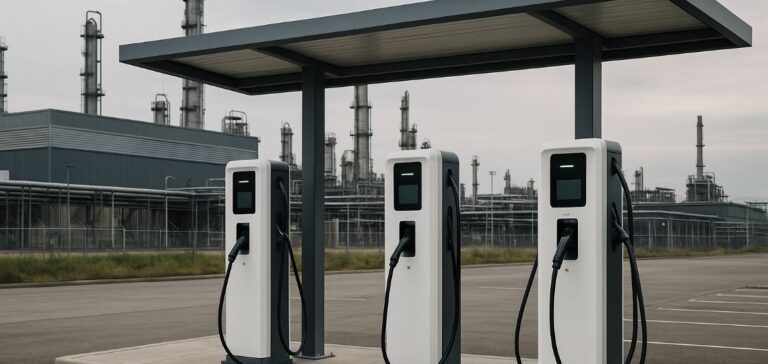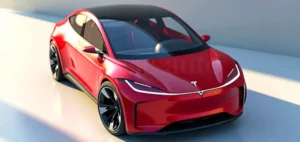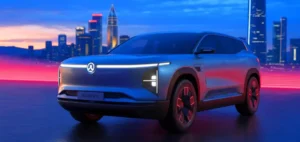For over two decades, China has been the undeniable engine of global oil demand growth. Its rapid economic expansion, coupled with an explosion in vehicle ownership and significant increases in household incomes, propelled the country to become the world’s largest oil importer. This dynamic, driven primarily by growing gasoline consumption in passenger vehicles, seemed destined for sustained expansion. Yet, since 2020, data published by the Oxford Institute for Energy Studies (OIES) reveals a notable structural shift: Chinese gasoline demand is now showing clear signs of stagnation, if not decline, paving the way for a complex new chapter for both the national and international oil industries.
A Rapid Transformation of the Chinese Automotive Market
According to OIES, China’s new energy vehicle (NEV) market, encompassing battery electric vehicles (BEV) and plug-in hybrid electric vehicles (PHEV), reached a symbolic milestone in 2024. Indeed, for the first time, NEVs accounted for more than 50% of monthly sales of passenger vehicles. This spectacular acceleration marks a crucial turning point for a country where the automotive industry represents a strategic economic pillar.
In detail, data collected by OIES indicates that sales of pure electric vehicles (BEV) and plug-in hybrid vehicles (PHEV) increased by 22.6% and 76.7% year-over-year, respectively, in 2024. This strong trend toward plug-in hybrids, particularly popular in the SUV segment, complicates the analysis of the real impact on gasoline consumption, as these vehicles continue to use traditional fuel alongside electricity.
This complex dynamic underscores the importance of the ongoing debate about the actual electric usage share of these vehicles. According to OIES, the electric utility factor of plug-in hybrids in China is estimated between 49% and 64%, leaving significant uncertainty regarding their true long-term impact on gasoline consumption.
Declining Gasoline Demand: Refiners Under Pressure
Facing this rapid growth in electric vehicles, previous forecasts by major Chinese refiners must now be revised downward. In 2024, Sinopec, the country’s leading refiner, officially estimated that gasoline consumption peaked in 2023, at a level of 3.7 million barrels per day. This rapid revision, documented by OIES, confirms expectations of a structural turnaround in the domestic market, pushing the entire sector to rethink its strategies.
Indeed, the OIES report indicates that the Chinese refining sector is now under increasing pressure to adapt quickly. While domestic refining capacity has significantly expanded in recent years, particularly following the liberalization of crude oil imports in 2015, a substantial portion of this capacity could become surplus due to the anticipated drop in domestic gasoline demand. In the medium term, refineries will thus be forced to accelerate their transition toward producing higher value-added petrochemicals, such as ethylene or propylene, rather than maintaining heavy exposure to the road fuels market.
Decline Scenarios: A Transition with Uncertain Contours
The OIES report explores several scenarios for the evolution of gasoline demand in China through 2040, highlighting persistent uncertainties about the speed and extent of this transition. In a central scenario based on moderate but steady NEV sales growth and an average vehicle lifespan of 15 years, the institute projects Chinese gasoline demand could decline to around 3 million barrels per day as early as 2030, compared to about 3.6 million barrels per day in 2024.
Conversely, a more conservative scenario considered by OIES, involving slower penetration of electric vehicles and an extended traditional vehicle lifespan up to 25 years, would see gasoline consumption remain relatively stable around 3.3 million barrels per day by 2035, thereby limiting immediate negative impacts on the petroleum industry.
These scenarios underscore the high degree of uncertainty influencing future industrial strategies for major Chinese firms and the global oil markets, where China plays a dominant role.
China’s Energy Policy: Stability Despite Disruptions
One of the central conclusions of the OIES report lies in the enduring importance of political support for electric vehicles in China. The Chinese government views the NEV sector not only as a means to reduce foreign oil dependency but more importantly as a strategic economic lever to modernize its manufacturing industry. Subsidies, although gradually reduced, continue in various forms to support the sector.
According to OIES, Chinese authorities are expected to maintain strong political backing for the electric vehicle sector at least until 2030. Consequently, significant fluctuations in international oil prices are unlikely to significantly slow down the expansion of NEVs in China.
Implications for International Markets and Oil Trade
The anticipated reduction in Chinese automotive gasoline demand will inevitably have repercussions on global crude oil and refined products trade. OIES notably emphasizes that if Chinese refineries accelerate their shift toward petrochemicals, this could generate increased surplus refined products, potentially exportable. However, Chinese authorities remain reluctant to significantly boost refined fuel exports, partly due to internal environmental objectives.
Conversely, OIES notes that if exports remain limited, surplus refining capacity could lead to a structural reduction in Chinese crude oil imports. This development would notably impact oil-exporting countries, which would likely need to seek alternative commercial outlets to offset declining Chinese demand.
A Major Challenge for the Global Automotive Industry
Finally, according to OIES, China’s acceleration toward electric vehicles also poses a significant challenge for the global automotive industry, still heavily oriented toward combustion engine and hybrid powertrains. Increasing competitiveness among Chinese electric vehicle manufacturers, supported by low production costs and robust policy backing, could permanently disrupt international competitive balances.
A key question raised by OIES concerns the capacity of European, Japanese, or American automakers to rapidly adapt to this transition. China’s growing leadership in electric vehicle technologies, particularly in batteries and ultra-fast charging infrastructure, could strengthen its position as a key player in the global electric vehicle market in the medium term, while simultaneously reducing its external oil dependency.
Thus, OIES concludes its report by noting that while the peak in Chinese gasoline consumption represents a profound disruption, the actual speed and magnitude of this transition remain uncertain. The only certainty now is that the Chinese and international oil sectors are entering a period of complex strategic adaptation, where foresight and flexibility will be more necessary than ever.






















